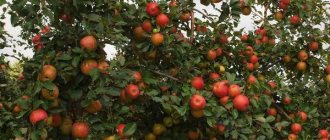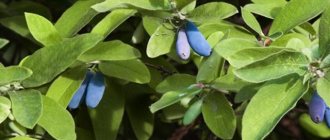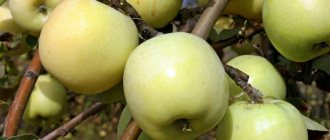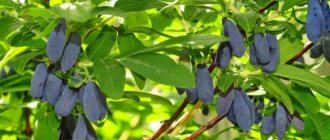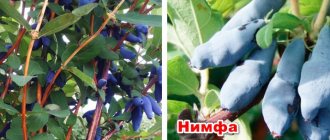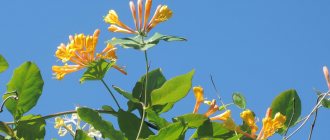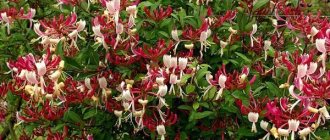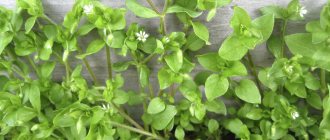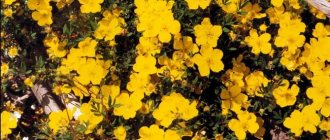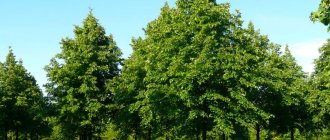- May 4, 2019
- Berries
- Ulyana Romanova
There are not so many blue berries in nature. However, they are all unique and bring invaluable benefits to human health. What are their names? What is special about their composition? Why is it worth eating berries of a pleasant blue hue, what are their benefits? The topic is interesting, and therefore now it is worth paying a little more attention to studying it.
Blueberry
This is a type of deciduous shrub found in all regions of the Northern Hemisphere where the climate is temperate and cold.
Blueberries are known to many as an effective means of strengthening the immune system. However, it has much more healing properties. Not surprisingly, the composition of the thing is amazing.
It contains vitamins B1, B,2, P and A, as well as the completely rare K1, which plays a vital role in the process of blood clotting. The composition also contains ascorbic acid and phenolic compounds that retain it in the body.
This blue berry, whose name is known to many, does not contain very much iron, but it is presented in such a form that it is almost completely absorbed.
Blueberries also contain the most pectins, which help cleanse the body of strontium and cobalt - radioactive elements.
And of course, one cannot fail to mention carotenoids, which have a positive effect on visual functions, as well as magnesium, known for its soothing properties.
Popular varieties of blue honeysuckle
Wild blue honeysuckle usually has a strong bitter taste. To date, many varieties have been developed that are free from this disadvantage; the most popular of them are listed below.
Honeysuckle Siberian
The honeysuckle variety Sibiryachka was bred in the Tomsk region in 1972. In 2000, it was included in the state register of varieties of the Russian Federation and recommended for cultivation in all regions.
A distinctive feature of the variety is its early fruiting period. In the regions of Siberia, the berries begin to ripen in early June. The height of the bushes is average (about 1.5 m), the crown has the shape of a ball. The leaves are small, oval, and light green. The flowers are pale yellow, funnel-shaped. Large fruits (up to 2.5 cm in length) with juicy and tender pulp have a sweet and sour taste.
The following varieties can be used as pollinators:
- Tomsk;
- Enchantress;
- Narymskaya.
Honeysuckle Vasyuganskaya
Vasyugan honeysuckle is one of the most popular early ripening varieties, which is valued by gardeners for its high frost resistance and drought resistance. The shrub reaches a height of approximately 1.8 m. The erect shoots bear large oval-shaped leaves, painted dark green.
The fruits ripen in mid-June. They taste sweet, with a slight sourness. The average weight of the berries is 0.8 g. The yield is 2-2.5 kg per bush.
Best pollinators:
- Bakchar giant;
- Moraine;
- Cinderella.
Honeysuckle Silginka
Silginka is another variety originally from Siberia. Born in 1978, in 2011 it was included in the state register. The main goal of the creators of the variety is to obtain a plant characterized by high frost resistance and resistance to various diseases. And they successfully achieved this goal.
The Silginka honeysuckle bush reaches 1.5 m in height and 1.2 m in width. The curved shoots of the plant, densely strewn with elongated green leaves, form an oval crown. Large fruits (up to 2.5 g) with juicy pulp are covered with thin skin. A characteristic feature of the variety is the absence of bitterness in the taste. 1.5-3 kg of berries are collected from one bush.
Pollinator varieties:
- Siberian;
- Nymph;
- Tomsk
Honeysuckle the Giant's Daughter
One of the newest varieties of honeysuckle, included in the state register in 2017. The height of an adult plant is approximately 1.7 m. Depending on climatic conditions, flowering begins in late April or early May. Fruiting is in mid-June.
Honeysuckle The Giant's Daughter is distinguished by large fruits, stretching up to 4 cm in length. The weight of one berry can reach 3 g. Ripe fruits do not fall off for a long time, which is an undoubted advantage of the variety.
The following varieties are usually used as pollinators:
- Nymph;
- Delight;
- Bakchar giant.
Therapeutic qualities of blueberries
The benefits of this blue berry are invaluable. The list of therapeutic properties of blueberries can be outlined as follows:
- Promotes hematopoiesis.
- Regulates blood sugar and cholesterol levels.
- Improves memory and the memorization process itself.
- Strengthens the heart muscle and blood vessels.
- Positively affects brain activity.
- Relieves eye strain, slows down age-related vision decline, improves its sharpness (because it contains beta-carotene and retinol).
- Prevents constipation and diarrhea.
- Has an antimicrobial effect.
- It has a positive effect on the functioning of the gastrointestinal tract: improves digestion, promotes the formation of gastric juice.
- Improves the functioning of the pancreas.
- Helps eliminate swelling.
- It has a good effect on the female body and helps relieve cystitis.
- Normalizes metabolism.
- Slows down the aging process.
- Minimizes the risk of developing Alzheimer's disease.
- Strengthens the nervous system.
- Helps to recover faster from illnesses.
But all the wonderful properties of the blue berry appear if it is present in the diet on an ongoing basis.
Contraindications to the use of honeysuckle
The rich chemical composition of honeysuckle determines not only a number of useful qualities and a wide range of its use, but also contraindications for use. The fruits of honeysuckle of edible species can be confused with its counterparts from inedible species. Berries of decorative varieties of honeysuckle, as well as unripe berries of edible honeysuckle, cannot be eaten. People prone to allergies and pregnant and lactating women should refrain from eating berries.
Honeysuckle should be eaten in moderation; overeating this berry can lower blood pressure, provoke a sharp increase in the level of red blood cells and hemoglobin in the blood (this phenomenon in medicine is called secondary erythrocytosis), and cause diarrhea and allergic rashes in the form of diathesis in children.
How to eat blueberries?
It is highly recommended to eat it fresh. Jams and pureed jams are excluded because during their preparation all vitamins are destroyed. The benefits of blue berries disappear if exposed to temperatures above 60 degrees.
The daily consumption rate, by the way, is 150 grams for adults and half as much for children.
It is important to note that blueberries have a low glycemic index, so they are not prohibited for people suffering from diabetes.
By the way, not only berries are useful, but also the leaves of the bush on which they grow. Products made on their basis have expectorant and regenerating properties. So decoctions from the leaves of the blueberry bush are indispensable in the treatment of cough, bronchitis and pneumonia.
Benefit of the berry
Wild berries have a number of undeniable advantages:
- Excellent winter hardiness. For most varieties, temperatures of 50 degrees below zero are not a threat. Even if plants have been damaged by frost, they tend to recover quickly. Moreover, they delight with tasty and aromatic fruits, while other shrubs lose almost their entire harvest.
- Duration of fruiting. This is one of the most fruitful shrubs. The long life span allows it to bear fruit for 25-30 years.
- The honeysuckle harvest is always in demand in any market. Even from the smallest plot of land you can collect a lot of berries.
- Honeysuckle fruits ripen very quickly. Honeysuckle is a fast-growing crop. Some varieties can produce fruits in the first year after transplantation.
- The fruits can be collected at a time when strawberries and raspberries are just beginning to bloom.
Honeysuckle is accessible to any summer resident. Almost all varieties are very resistant to pests and many diseases . Doesn't require any special care. There is no need to treat the shrub with various chemicals. The fruits can be consumed even by small children.
Blueberry
The name of the blue berries hints at a different shade, but this is not the case. You can see for yourself by looking at the photo below.
Bilberry is a low-growing shrub whose name comes from the Latin word vacca, which translates to “cow” (the leaves were fed to livestock).
There are many varieties, the most famous are highbush (bears a lot of fruit, often used for decorative purposes) and lowbush (very sweet berries).
The composition of this blue berry is impressive, as is the case with blueberries. It contains vitamins (PP, E, C, B2, B1), calcium, iron, magnesium, phosphorus, potassium, polysaccharides, tannins, organic acids, flavonoids, antioxidants, fatty acids, monosaccharides.
Despite the fact that the berries are very sweet, they do not have many calories - only 44 kcal per 100 grams.
Botanical description and varieties of honeysuckle
Blue honeysuckle, or Blue honeysuckle (lat. Lonícera caeruléa) is a small shrub of the Honeysuckle family, blue or light blue fruits are considered edible.
The plant is a deciduous shrub whose height reaches more than two meters. The bark is light brown, brown, and tends to crack along the stem and then peel off. The leaves are dark green, elliptical in shape, opposite on the stem. The flowers are light with a yellowish tint, bell-shaped.
The fruit is a berry, light blue in color with a bluish coating on the surface of the peel. The shape is an oblong ellipse. The taste is attractive - the berry is sweet with bitter-sour notes; its organoleptic properties are reminiscent of blueberries or blueberries. The shrub produces blue berries for quite a long time, and is almost one of the very first to begin bearing fruit.
According to their economic purpose, cultivated species of honeysuckle are divided into ornamental and fruit. Decorative honeysuckle is a shrub or vine in plant habit. Shrubs include Tatarian, Alpine, common, Maksimovich, Korolkova honeysuckle. Lianas are honeysuckle, Thälmann's honeysuckle, climbing, Brown's.
Honeysuckle honeysuckle is quite famous and in demand in decorative landscape design. This liana has a very attractive appearance for almost the entire warm period of the year - from May it is densely covered with fragrant leaves, then charming multi-flowered soft pink inflorescences appear on it. By the end of summer, fruits (inedible orange berries) ripen on it, which gradually fall off. Honeysuckle honeysuckle is planted in compositions with coniferous trees, other shrubs, or individual islands.
Benefits of blueberries
These edible blue berries, due to their rich composition, affect all body systems. Here are the benefits of blueberries:
- Maintaining joint and tissue strength.
- Reducing the risk of heart attack, preventing strokes and heart attacks.
- Reducing the amount of harmful cholesterol in the blood, strengthening vascular walls.
- Stabilization of the functioning of all glands.
- Elimination of blood clots and improvement of the condition of the vessels of the lymphatic system.
- Improved motor function, coordination and memory.
- Providing the body with protection from the negative effects of stress.
- Strengthening the retina, improving visual function and ocular circulation. Since blueberries have bactericidal and anti-inflammatory properties, they also effectively fight conjunctivitis.
- Elimination of respiratory diseases.
- Treatment of colitis and improvement of intestinal microflora.
- Preventing diarrhea, constipation, hemorrhoids and excess weight gain.
- Prevention of liver and gallbladder diseases.
- Improving skin condition, increasing its elasticity and firmness. Blueberries are recommended for people with lichen, ulcers and eczema.
They say that due to their properties, blueberries can even slow down the development of cancer cells. Regular consumption helps strengthen the immune system.
Which is better and more useful?
Which is better - blueberry or honeysuckle? It is difficult to give a definite answer to this question. Both berries deserve attention; they have a lot of beneficial properties due to their chemical composition.
Compare the set of vitamins and minerals in the summary table.
| Nutrients | Blueberry | Honeysuckle |
| Vitamin A | — | 70.4 mcg |
| beta carotene | — | 0.42 mg |
| Vitamin B1 | 0.01 mg | 3 mg |
| Vitamin B2 | 0.02 mg | 3 mg |
| Vitamin C | 20 mg | 30 mg |
| Vitamin E | 1.4 mg | — |
| Vitamin PP | 0.4 mg | — |
| Vitamin K | — | 80 mcg |
| Potassium | 51 mg | 70 mg |
| Calcium | 16 mg | 19 mg |
| Magnesium | 7 mg | 21 mg |
| Sodium | 8 mg | 35 mg |
| Phosphorus | 8 mg | 35 mg |
| Iron | 0.8 mg | 0.8 mg |
Nutritional value of blueberries:
- calorie content - 39 kcal;
- proteins - 1 g;
- fats - 0.5 g;
- carbohydrates - 6.6 g;
- fiber - 2.5 g;
- water - 88 g.
Nutritional value of honeysuckle:
- calorie content - 41.2 kcal;
- proteins - 0 g;
- fats - 0 g;
- carbohydrates - 8.5 g;
- fiber - 1 g;
- water - 86 g.
Useful properties of honeysuckle
The fruits of edible honeysuckle contain tannins (astringents), which determine their tart taste. They have antiseptic, anti-inflammatory and hemostatic effects.
Pectins help normalize intestinal microflora, get rid of bloating and diarrhea. They inhibit the growth of pathogenic microorganisms and promote the removal of radionuclides.
Due to the high content of ascorbic acid, honeysuckle is used to treat colds, prevent vitamin deficiency, generally strengthen the body and maintain defenses.
Honeysuckle berries have an expectorant effect. Fresh juice treats trophic ulcers, lichens and burns.
Reference. The harsher the climatic conditions, the sweeter the fruits of wild edible honeysuckle.
Beneficial properties of blueberries
Blueberry fruits have anti-inflammatory, diuretic, choleretic, and tonic effects on the body. The taste of the berries is more delicate and sweeter, so both adults and children like them.
Blueberries lower blood sugar levels, so consuming them regularly is especially beneficial for diabetics.
The fiber contained in berries regulates digestive function, reduces bloating, and eliminates stomach cramps.
Calcium strengthens bone and tooth tissue. Vitamin K normalizes blood circulation, which reduces the risk of cardiovascular diseases to a minimum.
Carotenoids in blueberry fruits increase visual acuity.
About the use of blueberries
This dark blue berry is recommended to be consumed daily in the amount of one glass. You can divide this amount throughout the day or add it to various dishes - porridge, for example, fruit salads, cottage cheese, etc.
If you want to provide your body with maximum benefits, you should make healing tea. You need to fill 100 grams of dried fruits and flowers with filtered water. Then boil for 10-15 minutes, then cool and strain. You should drink this tea three times a day - the resulting volume should be divided into three doses.
By the way, blueberry leaf also goes well with arnica, lemon balm and motherwort.
Honeysuckle can be propagated in different ways
Growing from seeds. The seeds are obtained from the best, largest berries. To do this, crush the berries on thin blotting paper. Space the seeds apart. The paper will absorb the juice, and dry the seeds directly on the same sheet. After drying, the paper with seeds is stored at room temperature until sowing.
On a note
Seeds remain viable for 3-4 years. Best germination in the year of seed collection.
Seeds are sown on the surface of moist soil . The soil should be light and loose. The seeds are sprinkled with a small layer of sand. The container in which you sowed the seeds must be covered with film or glass to create a greenhouse effect. Do not water abundantly, but lightly spray with water from a spray bottle when the soil dries out. After about 3 weeks, shoots will appear.
Green cuttings . It is considered one of the most effective ways to propagate honeysuckle. Green cuttings are cut in summer. It is important to do this when the berries are not yet ripe. We cut cuttings about 10–15 cm in size. They must be treated with a root-forming preparation. They are planted at an angle of 45 degrees in a greenhouse or greenhouse. Regular watering and spraying is required. In the year of planting, the cuttings are left in place until spring.
Reproduction by horizontal layering . In early spring, before the buds open, last year's honeysuckle shoots are bent to the ground, pinned down and sprinkled with soil. The soil needs to be loosened and weeded. Layers are usually dug in the fall, in October. Horizontal shoots are cut off and dug up. Roots should already form on the shoots. Typically, cuttings require growing, but some gardeners dig them up only in the spring.
Honeysuckle
This name unites about two hundred plants of various species. However, now we will only talk about edible honeysuckle - these are large blue berries with a sweet smell and an unusual shape.
It contains beta-carotene, vitamins C, B1, B2 and A, potassium, iodine, phosphorus, iron, copper, aluminum, sodium, manganese, magnesium, pectin and tannins, sucrose, fructose and organic acids.
Harvesting honeysuckle
Fresh, ripe fruits of edible honeysuckle are the basis for the preparation of such desserts as compote, jam, marmalade, confiture, pastille, jelly. The low sugar content in the fruit pulp requires its increase in recipes for honeysuckle preparations. You can also preserve the benefits and taste of honeysuckle by drying, freezing or making juice from them. You can get honeysuckle juice using a regular household juicer. To get the maximum amount of juice from the berries, blanch the berries for three to five minutes before adding them to the juicer.
What are the benefits of honeysuckle?
Blue berries with a name that everyone will definitely remember are useful because they perform the following tasks:
- Normalize the functioning of the genitourinary system.
- Helps get rid of swelling.
- Excellent thirst quencher.
- Relieves symptoms of poisoning.
- Eliminate inflammatory processes.
- Fights infections and streptococcal bacteria.
- Eliminate fatigue and also stimulate brain function.
- They fight atherosclerosis and strengthen the cardiovascular system.
- Lower blood pressure.
- Improves the functioning of the gastrointestinal tract and improves appetite.
- If you make compresses from them, you can cure ulcers, eczema and lichen.
Plus, honeysuckle is a very tasty blue berry. Its pleasant bitter taste will appeal to people who prefer not too sugary treats.
Reproduction of blue honeysuckle
Most often, blue honeysuckle is propagated using cuttings. At the same time, for cuttings it is better to use young, not yet lignified shoots. They need to be harvested immediately after fruiting begins. The length of the cuttings should be 10-12 cm, and 2-3 buds should be left on each of them. The lower leaves should be removed. Then it is recommended to place the workpieces in water for a day. Only after this will it be possible to begin planting the cuttings in pots with nutritious soil substrate.
When propagating honeysuckle by layering, the first step is to thoroughly loosen the soil around the bush. Only strong and healthy shoots can be used as layering. The selected branches must be pressed to the ground, secured in this position with wire and covered with a layer of earth no more than 5 cm thick. It is best to carry out this procedure at the end of summer or early autumn, then next spring the young plants can already be separated from the mother bush.
Important! When honeysuckle is propagated by seeds, the varietal characteristics of the plant are lost, so this method is practically not used.
Recommendations for the use of honeysuckle
As with blueberries, one glass per day is enough. But unlike other berries, honeysuckle does not lose its healing properties when cooked. Therefore, you can make compotes, jams and preserves from it without fear of losing its benefits.
You should also make medicinal tea from honeysuckle. You need to pour 3 tablespoons of dry berries into a liter thermos and pour boiling water over them. Let it brew for 4 hours and then drink throughout the day. They say that this drink normalizes blood pressure, strengthens the immune system, relieves headaches and even helps in the treatment of respiratory diseases.
By the way, in folk medicine it is common to use not only honeysuckle berries, but also leaves, flowers and branches with bark.
Planting blue honeysuckle seedlings
If you follow all the recommendations, even a novice gardener can cope with planting honeysuckle. The ideal time for work is considered to be autumn, but seedlings in containers can be planted throughout the season.
Selection of planting material
For planting, it is better to choose plants over two years old, with developed roots and 2-3 branches on the stem. Their height should be 30-40 cm. It is important that the shoots are strong, flexible and healthy. The root system must be carefully examined for damage.
It is recommended to purchase planting material only from specialized nurseries. When purchasing a seedling, you should check with the seller for all the necessary information about the variety, yield, possible pollinators of the plant, etc.
Soil preparation
In order for the shrub to enjoy a rich harvest in the future, it is important to properly prepare the soil before planting. To do this, 5-7 days before the start of work you must:
- Dig holes about 40 cm in diameter. The recommended distance between planting holes is 2-2.5 m.
- Add 10 kg of humus and 400 g of nitrophoska into each hole, which can be replaced with any other complex of mineral fertilizers containing potassium and phosphorus.
- Place a drainage layer consisting of expanded clay, crushed stone or broken brick at the bottom of the planting holes.
Landing technology
Algorithm for planting honeysuckle seedlings:
- Moisten the planting holes.
- Add some soil. Form a small mound in the center of the hole.
- Place the seedling on a mound. Spread the roots, carefully distributing them on different sides.
- Sprinkle the seedling with the remaining soil. There is no need to deepen the root collar.
- Water generously and mulch with peat.
Important! Unlike other fruit and berry bushes, honeysuckle does not need pruning after planting. This procedure can significantly slow down the development of the plant.
Mahonia holly
It is an evergreen shrub with blue berries and yellow flowers. Not everyone knows that the fruits are widely used in cooking. They are also used as a natural coloring for wine drinks. They have a sweet and sour pleasant taste, reminiscent of barberry.
It would be possible to list the composition, but it is not much different from previous berries. However, this can only be said about the pulp! The peel of mahonia fruit has a unique composition - it contains dozens of biologically active components, thanks to which the berries began to be actively used by homeopaths in the treatment of skin diseases.
Mahonia rhizome is no less valuable. An extract containing tannins, ascorbic acid, alkaloids and many other components is extracted from it. The extract helps improve metabolism, strengthen the immune system, activate the cardiovascular system and even slow down the aging process.
Planting edible honeysuckle
The best time to plant honeysuckle is autumn, late September / early October. First, you need to choose the place where you plan to plant honeysuckle. Both illuminated areas and light partial shade are suitable.
It is important that the place is protected from the wind. Honeysuckle is quite unpretentious and feels good on any soil. But the most favorable option would be loose and well-drained soil. Too dry soil will not be suitable.
On heavy damp soils and poor sandy soils, development will be slowed down and there will be practically no harvest. The groundwater level is important; it should not exceed 1 meter.
Before planting, it is important to clear the soil of weeds. If the acidity of the soil is high, it is necessary to add from 200 to 400 g of lime per square meter.
Healthy planting material is the key to the success of growing any plant. Seedlings with a closed root system take root faster. In an open root system, there is a high probability that the roots may become dry and the plant may die. Follow the “golden mean” rule. The roots should not be large or small.
On a note
It is best to choose varieties from the breeding regions closest to your site.
Before planting, carefully inspect the bush. Remove broken and overly long shoots. It is necessary to dig holes of 40/40 cm, the distance between the holes should be from one to two meters. Add well-rotted manure, 300 grams of ash, 100 grams of double superphosphate, 30 grams of potassium sulfate to the soil. Mix all this thoroughly with the soil.
Next, place the honeysuckle bush in the hole and cover it with loose soil. We deepen the root collar no more than 3 cm. After planting, the plant must be watered at the rate of 10 liters of water per bush, but no more. Mulch the bush with humus, peat, and dry grass.
About the use of berries
It may seem that mahonia fruits are a universal remedy for many problems. Here are the properties of this unusual blue berry:
- Softens stool and prevents constipation.
- Elimination of irritable bowel syndrome.
- Improved appetite.
- Protecting cells from free radicals.
- Increased metabolism.
- Slowing down aging.
- Normalization of the heart and blood vessels.
- Elimination of bladder diseases.
- Strengthening lymph and blood circulation.
- Alleviating the symptoms of herpes, eczema, rashes.
- Prevention of hepatitis, inflammation of the biliary tract, dysbacteriosis and cholecystitis.
The berries can be eaten fresh, added to breakfast cereals or fruit salads, or made into drinks, jam, or marmalade. And of course, make healing remedies according to folk recipes, of which there are many.
Diseases of honeysuckle
If you see leaf diseases on honeysuckle, then most likely you have pests on your bush.
Honeysuckle - cereal aphid . The leaves turn yellow and become covered with yellow spots. Can be folded at different angles. Insect larvae are lemon yellow in color. The damaged plant can be sprayed with infusion of garlic, tobacco, pepper, and onion. In case of severe damage, it is necessary to treat with Aktara and Eleksar.
Shield . Insects are tightly attached to the bark and feed on the juices of the shoots. Severe infestation by scale insects leads to the death of the plant. You can tell that a plant is affected by scale insects by the growths and bumps inside which the parasites live. The necessary measures are spraying twice with Roggor or Actellik.
Leaf-eating insects . Several species of insects attack honeysuckle leaves. Shrub leaves spoiled by pests look unattractive and reduce decorative value.
To combat spotted and powdery mildew, spray with Bordeaux mixture or Topaz.
Rust fungi contribute to the appearance of brown spots on leaves. Bushes are sprayed with copper preparations in early spring.
Juniper
It’s easy to remember what the blue berry that grows on a coniferous tree is called. Because this is a unique plant! Juniper fruits in an amount of 35 grams completely cover the daily requirement of the human body for vitamin C.
About 40 percent of the composition is made up of monosaccharides, the rest are phytoncides, essential oils, organic acids, as well as chromium, iron and manganese.
You can eat up to 100 grams per day, dividing this amount into two doses. There is no need to worry - the blue berries, the photo of which is presented above, are absolutely edible. They have a pleasant, slightly bitter taste with a rich hint of pine. They can also be used as a seasoning, and can also be added when salting meat.
Blue honeysuckle care
Honeysuckle is one of the most undemanding crops to care for. It can grow on its own. However, proper care of the bush helps to increase productivity and improve the taste of the fruit.
Watering and mulching the soil
Despite the fact that honeysuckle is considered a moisture-loving plant, it does not tolerate flooding of the soil. Watering should be frequent, but not abundant. It is important to ensure that the soil is always moist, especially during flowering and fruiting.
You can reduce the amount of evaporated moisture and reduce the frequency of watering by mulching the soil in the tree trunk circle. To do this, it is better to use organic materials that will also serve as fertilizer (peat, humus, compost). The thickness of the mulch layer should not exceed 5 cm.
Top dressing
Honeysuckle needs annual feeding, since maximum productivity can only be expected from a bush growing on fertile soil. Plants are fed with nitrogen in early spring, using ammonium nitrate or urea. For 1 sq. m will require about 15 g of the substance. In autumn, phosphorus-potassium fertilizers are applied to the soil at the rate of 50 g per 1 square meter. m.
Trimming
In the first 2-3 years after planting, the shrub will grow slowly, so it is best to avoid pruning during this period. Only when the bush becomes voluminous enough and the crown begins to thicken can you begin to normalize the number of zero shoots (growing from the ground). If there are too many of them, the branches will become crowded. They will not be able to develop normally due to lack of light and will gradually begin to fade.
In the future, the shrub requires annual sanitary pruning of the crown, during which all dry, diseased and weak shoots are removed. It is recommended to perform this procedure in autumn or spring.
Healing properties of juniper
Since this plant is very common in medicine, we need to touch on this topic. The fruits themselves help cope with the following conditions:
- Pathologies of the pancreas and liver.
- Gastrointestinal disorders.
- Problems with the urinary system.
- Respiratory diseases.
- Inflammations of various etiologies.
Berries can be used for various purposes, as they have laxative, regenerative, antiseptic, expectorant, bactericidal, analgesic, tonic, diuretic and anti-inflammatory effects.
You can not only eat them, but also make essential oils, alcohol tinctures, decoctions, and ointments from the fruits.
Essential oil from honeysuckle
Decoctions and infusions are not all that can be prepared from honeysuckle at home. The fresh flowers of this fragrant plant produce a delicious essential oil, which, by the way, also has many beneficial properties. This product can be used in different ways:
- to remove toxins from the blood and liver;
- for headaches, fever, skin rashes, stomach upsets;
- for infectious diseases;
- to ease breathing with asthma and chronic cough;
- as an expectorant (add a few drops to tea);
- in home cosmetics (lotions, shampoos, conditioners, creams - moisturizes and softens skin and hair, gives a delicate aroma);
- for soothing baths;
- in aromatherapy;
- to freshen the air.
Important note: essential oil should not be applied to the skin undiluted with another carrier oil, as it may increase skin sensitivity to the sun.
Essential Oil Recipes:
- Pour two tablespoons of fresh flowers into 100 g of olive oil and leave for 2-3 months in the dark. Keep refrigerated.
- Pour one part of crushed honeysuckle flowers into 5 parts of any base oil. After 3 weeks, strain.
- Mash fresh honeysuckle flowers a little so that they release their juice, pour in any oil and close the container tightly. After two days, strain and pour the same oil over a fresh batch of petals. Repeat the procedure three times.
Thorn fruits
This is the name of the blue berries, which are quite difficult to get. Sloes are really difficult to harvest - the thorns get in the way.
The taste is not for everyone - before frost the fruits are sour, very tart, and then, when it gets colder, they become sweetish, tender and very soft. The texture turns from elastic to creamy.
Triterpenoids, fiber, fatty oils, coumarins, nitrogenous and steroid compounds, vitamin E, as well as many elements found in the compositions of the above berries - this is what is found in thorn fruits. By the way, they are more actively used in folk medicine than other parts of the plant.
Pest and disease control
If you see that individual fragments of leaves dry out, and over time all the foliage begins to dry out, this is fungal ramulariasis. If you leave the situation to chance, the affected area will rapidly grow, and saving the flower will be much more difficult.
Dirty green spots that turn gray and brown over time most often indicate cercospora. Drying shoots are the first symptom of tuberculosis, which appears as brown tubercles on the branches. The whitish coating is powdery mildew, which first covers young leaves, but then spreads.
The danger of disease is that fungal spores survive even winter and spread again in the spring, so all affected shoots and foliage must be removed and burned. To prevent the appearance of fungus, introduce mineral fertilizers on time and use fungicides for preventive treatment.
The most common pests of honeysuckle are the leaf roller butterfly, honeysuckle moth, aphids, moths, and scale insects. Do not forget about treating the shrubs with insecticides, which are introduced by fine-drip watering strictly in dry weather in several applications with an interval of 1-2 days.
Irga
Another small blue berry that deserves attention. They are not very popular - only enthusiastic gardeners grow shadberry, as the plant does not always take root.
100 grams of fruit contains 44.4 percent of the daily value of ascorbic acid. Irga also contains previously unmentioned flavonols and phytosterols.
This blue berry has anti-inflammatory, tonic, bactericidal, cardiotonic, wound-healing, tonic, hypotensive and astringent effects.
Not only the fruits are useful, but also the flowers. Products made from them help eliminate heart failure and normalize hypertension. And the bark is used in the treatment of gastrointestinal problems, burns and purulent wounds.
Useful components
Honeysuckle is a beautiful plant, but beauty is not the most amazing thing about it. Since ancient times, honeysuckle has been used as a medicine.
Its berries are a rich source of nutrients. For example, among the fruits of other shrubs they are the leader in magnesium content. Also rich in B vitamins, copper, iron, iodine, potassium, calcium, zinc, phenolic compounds, organic acids. One glass of fresh berries contains the daily requirement of iron and B vitamins.
Interestingly, as the berries ripen, their chemical composition changes. In particular, the concentration of acids decreases, but the content of sugars and tannins increases. The warmer the climate, the less bitterness contained in ripe berries. Fruits ripened in cooler conditions and high humidity have higher levels of organic acids and vitamin C. Berries ripened in temperate climates are also rich in ascorbic acid, but also contain many monosaccharides.
Useful components are found not only in honeysuckle berries. The leaves, flowers, and even the bark also provide benefits to human health.
Between 0.5 and 7 percent of honeysuckle's total chemical composition may be chlorogenic acid. This substance has antibiotic properties and is capable of removing carcinogens from the body. Another amazing component of the plant is luteolin. This is a powerful antioxidant that has an anti-inflammatory effect, plays the role of an immunomodulator, and improves carbohydrate metabolism in the body.
Grape
It comes in different varieties. There is also a blue berry! 80 percent of its composition is water, the rest is fatty acids, dietary fiber, enzymes, tannins, bioflavonoids, quercetin, essential oils, phytosterols and a vitamin complex.
Its regular use helps strengthen the cardiovascular system. In addition, blue grapes are highly recommended for women because it produces the following effects on their body:
- Keeps skin youthful.
- Relieves stress and improves mood.
- Promotes the breakdown of fats and weight loss.
- Tones and invigorates.
- Has the effect of a natural aphrodisiac.
- Replenishes the body with phytoestrogens necessary for the female body.
- Prevents the development of breast cancer.
- Squeezes from these blue berries are used to combat premature aging.
And you can make anything from grapes. This can be compote, juice, jelly, jam, soft drink spot, syrup, berries in their own juice, dried fruits and vegetable oil.
Growing and care
Blueberry seedlings are sold in containers. Bushes with an earthen lump of them are transplanted to open, elevated areas of the garden. The selected location should not be exposed to cold winds. The seedlings are planted in holes 40 centimeters wide and 50 centimeters long. This is the standard for light soils. On heavy ones, the width of the hole is 30 and the length is 70 centimeters. Plus you need 15 centimeters of drainage.
Following the instructions will not help if the soil on the site is neutral or, worse, alkaline. In the first chapter it was said that blue berries grow only in acidic soil. Planting blueberries in a hole should be accompanied by placing a soil mixture of high red peat, pine sawdust and sand into the hole. The latter needs 1 part. Take 2 parts of sawdust, and 5 parts of peat.
Preparing holes with soil mixture is also not a guarantee of successful blueberry growth. It should not be planted with tangled roots. Their ends should not point inward. To correct the situation, lowering containers with seedlings into water for 10 minutes before planting helps. Then the bushes are removed from the containers, straightening their roots. Without this procedure, the seedlings will die 2-4 years after planting.
In the planting holes, the seedlings are sprinkled 5 centimeters higher than they were previously in the pot. Two circle-holes are made around each bush. 5 liters of water are poured into each. After it is absorbed, the holes are sprinkled with mulch, for example, sawdust or pine needles. This cover will slow down the evaporation of moisture needed by blueberries.
The distance between the bushes of seedlings ranges from 0.8-1.5 meters. The higher and bushier the selected variety, the higher the number.
After planting, each season the berry requires 3 feedings with complex fertilizers. They should not contain chlorine. All organic fertilizers are prohibited because they kill the fungus living on the roots of the heroine of the article. Without the symbiont, the plant also dies.
The first fertilizing is applied in the spring. The second portion of fertilizer is given to the bushes immediately after flowering, and the third at the end of June. The amount of feeding depends on the age of the blueberries. For a two-year-old bush, 1 tablespoon is enough for the season. At 3 years old the 2nd is required. Four-year-old bushes are given 4 tablespoons, and five-year-old bushes are given 8. Plants over 6 years old require 16 tablespoons of fertilizer per season.
Growing blueberries requires adding ammonium sulfate to the soil an additional 2 times per season. But this is on soils with insufficient acidity. Blueberries need an indicator of 4.5-5. You can water the bushes with a solution of citric acid 2 times a month. For 3 liters you need 2 teaspoons. Each bush requires 10 liters of water every 3-4 days. This is in dry and warm weather. If it is cloudy and cool, the plant does without watering.
You can put the bark of coniferous trees or pine litter in the planting hole for blueberries.
Monitoring watering is especially important in the second half of summer. In parallel with the ripening of the fruits, buds are laid for next year's harvest. There is a risk of not collecting the required amount of berries this season, at the same time putting an end to the coming one. During the peaks of heat, it is recommended to add spraying of blueberry bushes to watering.
Starting from the age of 2, berry bushes are pruned, removing dry, weak branches and those close to the ground. So up to 5 years. In 6-year-old and older bushes, only those branches that have themselves reached 6 years of age are pruned. They are also selecting among the shoots of the current year. At the end of the season, only the 5 strongest are left. The procedure is carried out in early spring.
By winter, the bushes are piled high with sawdust, pine needles and covered with burlap. She is breathing. Non-breathable covering materials are not suitable. If the variety is frost-resistant, covering is still recommended. Blueberries will withstand the declared varietal temperatures, for example, -30 degrees, only under snow. But there are also winters with little snow.
Blueberry leaves are an indicator of acidity; if they turn red ahead of time, it means there is not enough acid.
Planting and caring for holly mahonia in open ground
The first step in planting mahonia holly is choosing a suitable location for it. The plant loves semi-shaded areas that are not exposed to drafts. The soil needs to be moist, rich, slightly acidic and always loosened. The optimal composition of the substrate is humus, turf soil, sand (proportion 3:2:2). This combination of components will be ideal for the mahonia shrub - planting and care will give the desired results. Since the plant reacts painfully to stagnant water, the soil needs to be drained.
See how mahonia holly is planted in the photo below:

